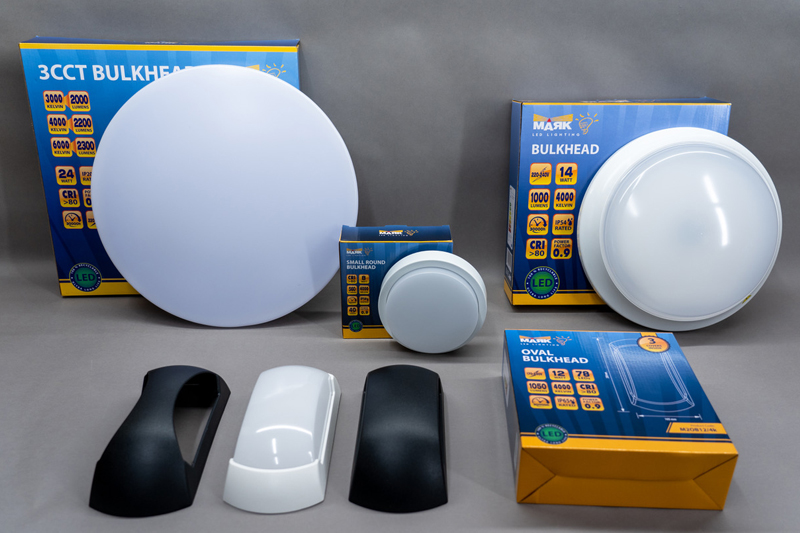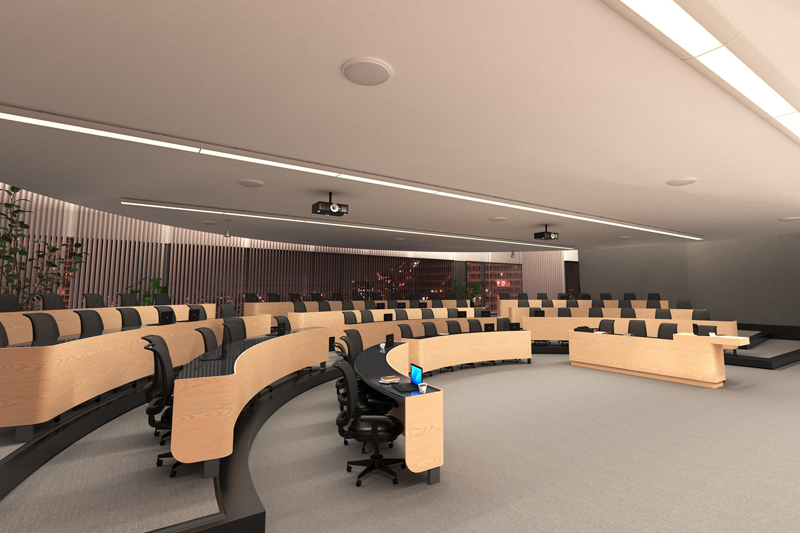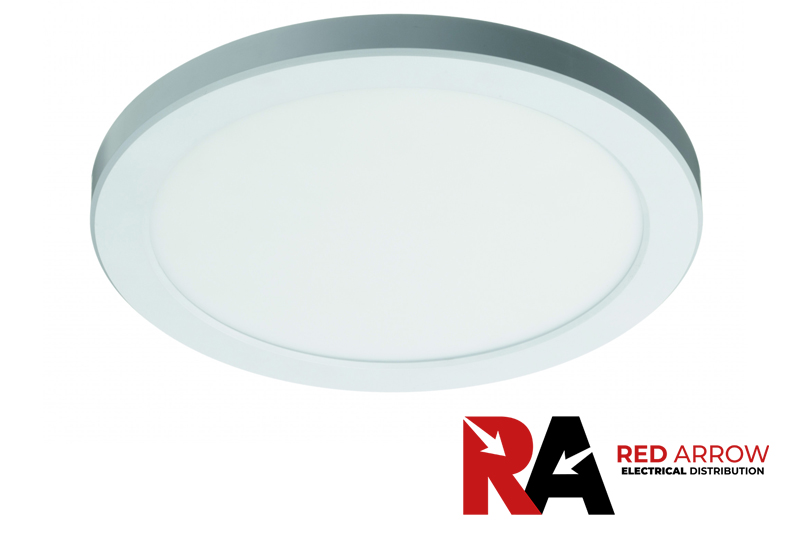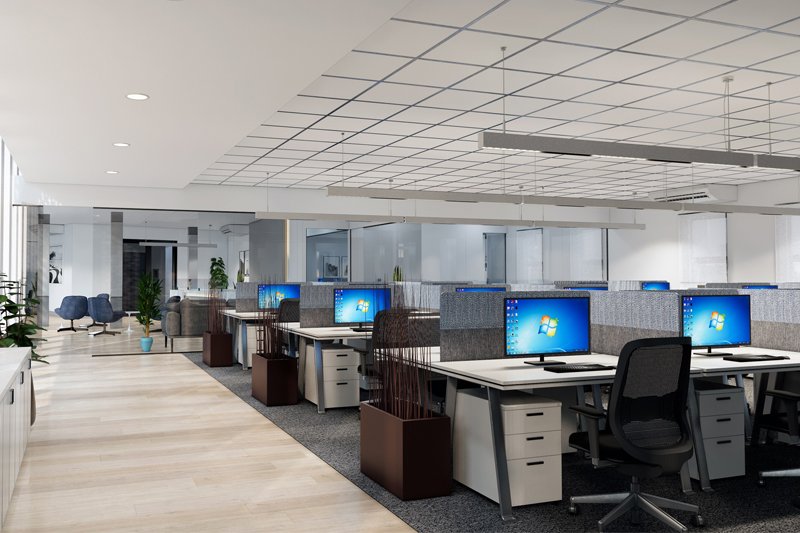Commercial lighting is a fast-moving industry and getting the lighting right for your next project can be a challenge. Here, Red Arrow explores the number of factors contractors must consider for each installation…
Energy efficiency
With the gradual increase of energy costs, end users are beginning to realise that low energy lighting is the way forward. And with lighting accounting for 20% of all energy consumption in the UK, any way to make it more efficient can dramatically cut costs.
The best starting point? Good lighting design. Particularly when working in a site refurbishment where the easy route is a simple one-for-one replacement. While cheaper in terms of initial installation, both for the customer and contractor, it can often be beneficial to design an installation with the right products to suit the space. Therefore, offering longer-term benefits and a better lit environment. For example, switching existing fittings for LEDs reduces ongoing running costs while saving money on annual maintenance, as they have a longer lifespan than more traditional solutions.
Light quality
When it comes to light quality, essential best practice is to choose light sources with the right colour appearance for the application they’re needed in. For example, 6000K daylight LEDs look bright, but can give a stark appearance in an office where 4000K might be more suitable. Or 3000K, which may create a less energising environment in an office, but create a warm, relaxed atmosphere in a hotel.
It’s also important to note that while colour appearance concerns how warm or cool an environment is under a specific light source, colour rendering focuses on how well colour is reproduced – without washing everything out. And selecting a light source with the lighting standard requirement of a CRI (Colour Rendering Index) above 80 is ideal. While high CRI isn’t necessary for every lighting application, lower than 80 and the light will render colours in a noticeably unnatural way. And products equipped with back lit technology make a good job at evenly distributing the light across the surface of the panel too.
Lux levels
The level of outdoor lighting on a clear day is approximately 100,000 lux, but indoor lighting often only reaches 1,000 lux by the windows and 25-50 in the middle area. Which is why lighting schemes should be calculated to allow for compensation – for example, in supermarkets, 750 lux would be sufficient.
The challenge? All light sources degrade over time, including LED. The solution? Choosing the right product with the right lifetime for inaccessible areas and putting a maintenance regime in place with consideration for easily maintained fittings.
Luminaire types
According to light industry stats, downlights are still the biggest product group of light fittings in commercial settings. Able to fulfil many applications for ambient lighting, accent lighting and even general lighting – with different types such as fixed, adjustable/tilt, different beam angles, square or round etc – they are adaptable to each goal. For example, they are adjustable to highlight items for accent lighting; and they are available in squares, which can be linked together to create a linear distribution of light in an ambient project. Ultimately, they are designed to create the perfect lighting balance.
Red Arrow’s top tips
In commercial buildings, lighting should always reflect the type of activity being performed to ensure people in the space are able to do the task:
Warehouses
- Warehouses sometimes require a lot of lighting, but LED luminaries with presence detection and daylight dimming sensors can save businesses 70% in costs in two years.
- The distribution and positioning of the light fittings, plus the choice and type of product is important to create the required effect.
- Each installation should be appropriate to the application, for example, the height and spread of the fittings, or taking high racks into consideration.
Offices
- While there isn’t a law or mandatory levels for lighting indoor workspaces, BSEN 12464 –
the British standard for lighting – and CIBSE Lighting Guide 7 can both offer guidance for your next installation.
- In a standard office, a CRI of 80+ creates a productive and pleasant working environment.
- In general, cooler and white lights are better for working and concentration, perfect for workspaces.
Retail
- A basic retail lighting design compromises two elements – ambient and accent lighting – but the mix is individual to each store’s individual look.
- LEDs can be installed as a guide to move customers through the store and highlight products with an accent fitting.
- Colour temperature and colour rendering are arguably the most important part of retail lighting, for example, at front of house.
Educational settings
- Good lighting levels are essential in educational lighting, for example, workspaces and whiteboards must be adequately illuminated.
- Individual controls, occupancy sensors and presence detection can maximise flexibility and energy saving.

For sales enquiries, please contact Red Arrow: Graham.lewis@redarrowelectrical.co.uk
For further media enquiries, please contact Nutcracker Agency: Gemma.turner@nutcrackeragency.com





